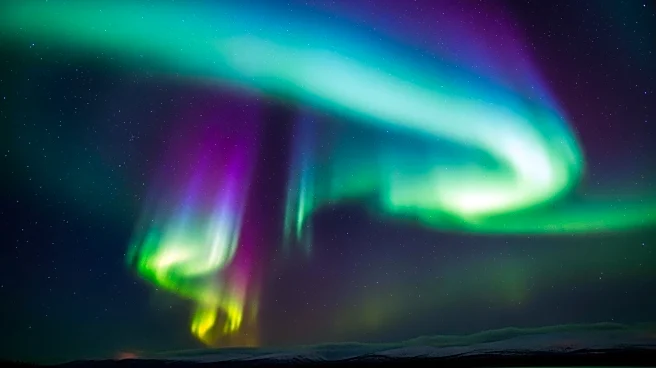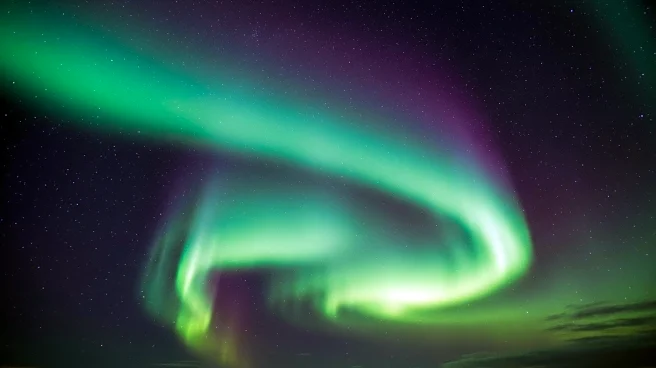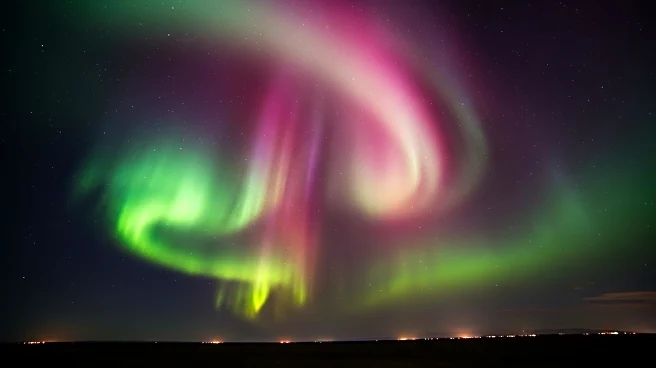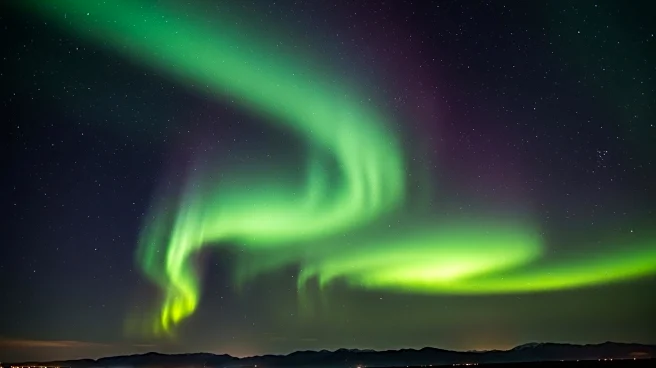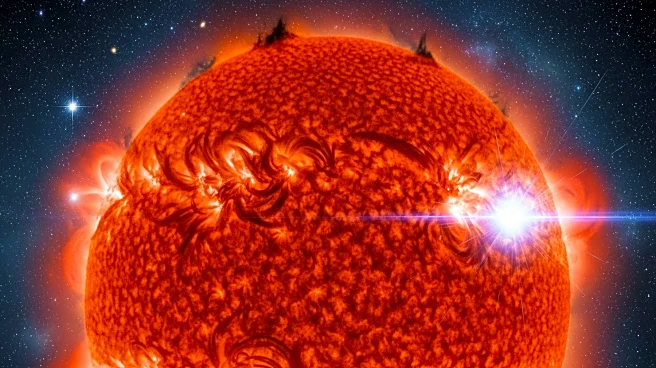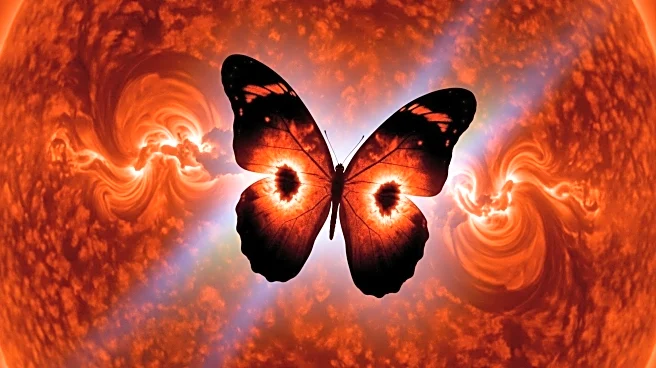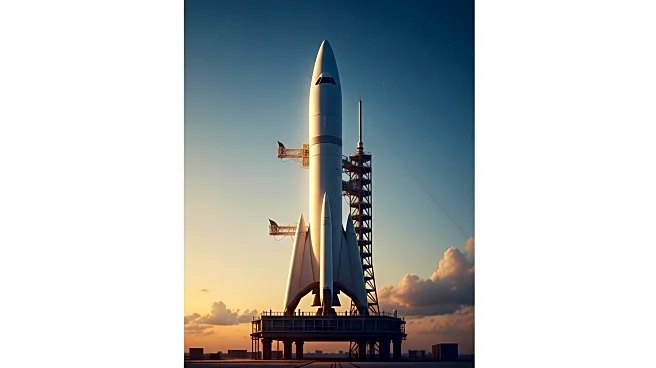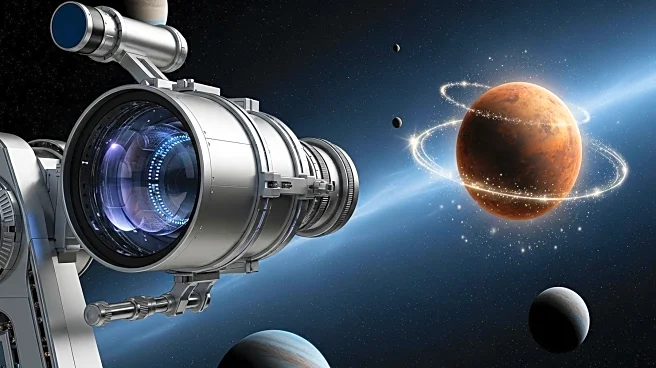What's Happening?
A butterfly-shaped coronal hole on the Sun is sending high-speed solar wind towards Earth, expected to arrive by September 14. This phenomenon could trigger geomagnetic storms ranging from G1 (minor) to G2 (moderate), potentially making auroras visible at mid- to high-latitudes across the Northern Hemisphere. Regions such as Canada, Alaska, Scandinavia, and northern parts of the U.K. may experience visible auroras. The timing coincides with the equinox, a period when Earth's magnetic field is more susceptible to solar wind interactions, increasing the likelihood of geomagnetic disturbances. The NOAA Space Weather Prediction Center and the U.K. Met Office are monitoring the situation closely.
Why It's Important?
The potential for visible auroras due to this solar wind event highlights the dynamic nature of space weather and its impact on Earth. Geomagnetic storms can affect satellite operations, GPS systems, and power grids, posing risks to technological infrastructure. The equinox effect, which enhances the interaction between solar wind and Earth's magnetic field, could lead to more intense auroral displays. This event underscores the importance of monitoring space weather to mitigate potential disruptions in communication and navigation systems, which are critical for various sectors including aviation, maritime, and emergency services.
What's Next?
Observers in affected regions are advised to monitor updates from space weather agencies like NOAA and the U.K. Met Office. The geomagnetic storm's impact will depend on the solar wind's strength and magnetic alignment upon reaching Earth. If conditions align, auroras could be visible further south than usual. Stakeholders in industries reliant on satellite and GPS technology should prepare for potential disruptions. Continued observation and modeling will help refine predictions and inform necessary precautions.
